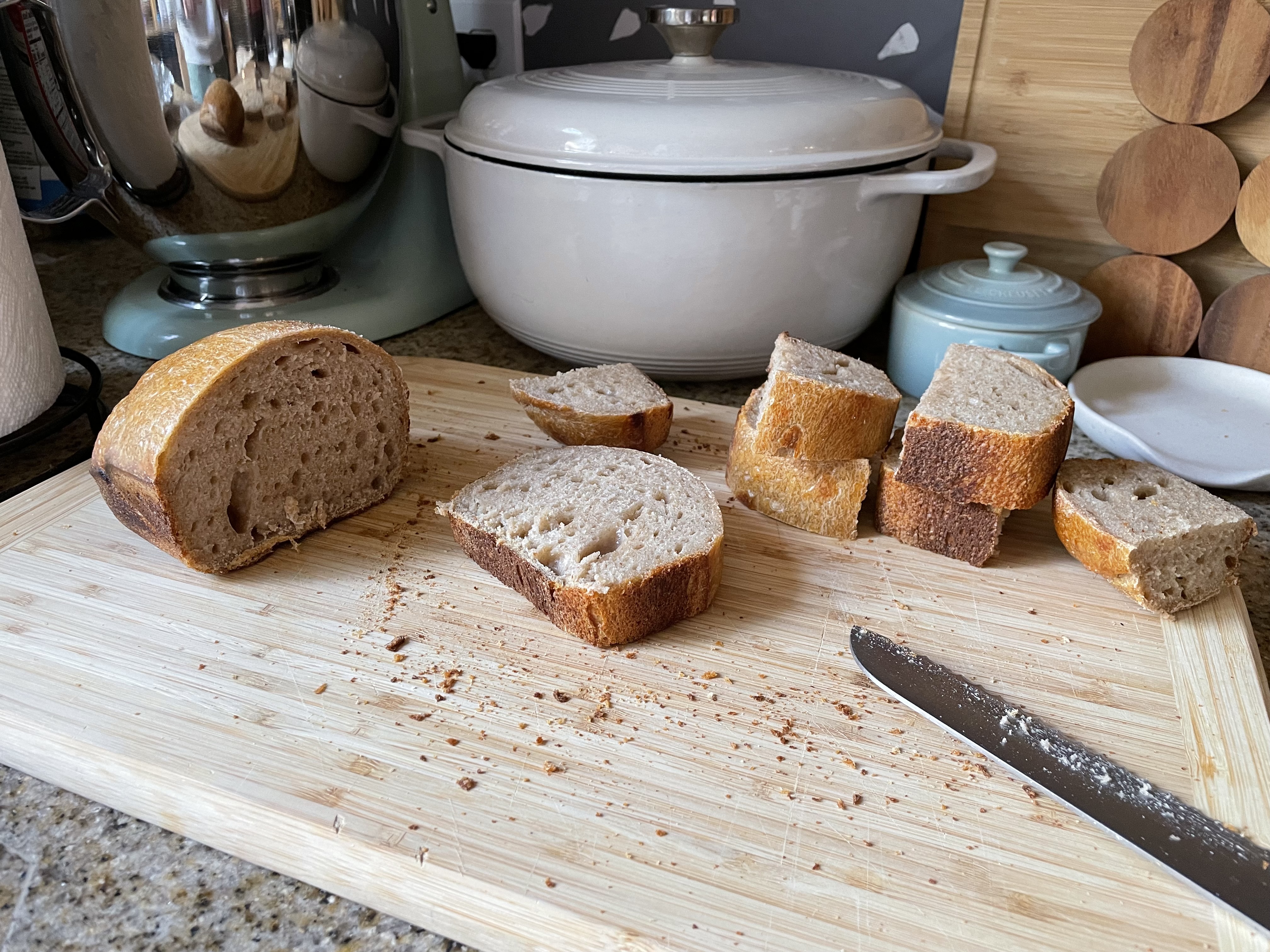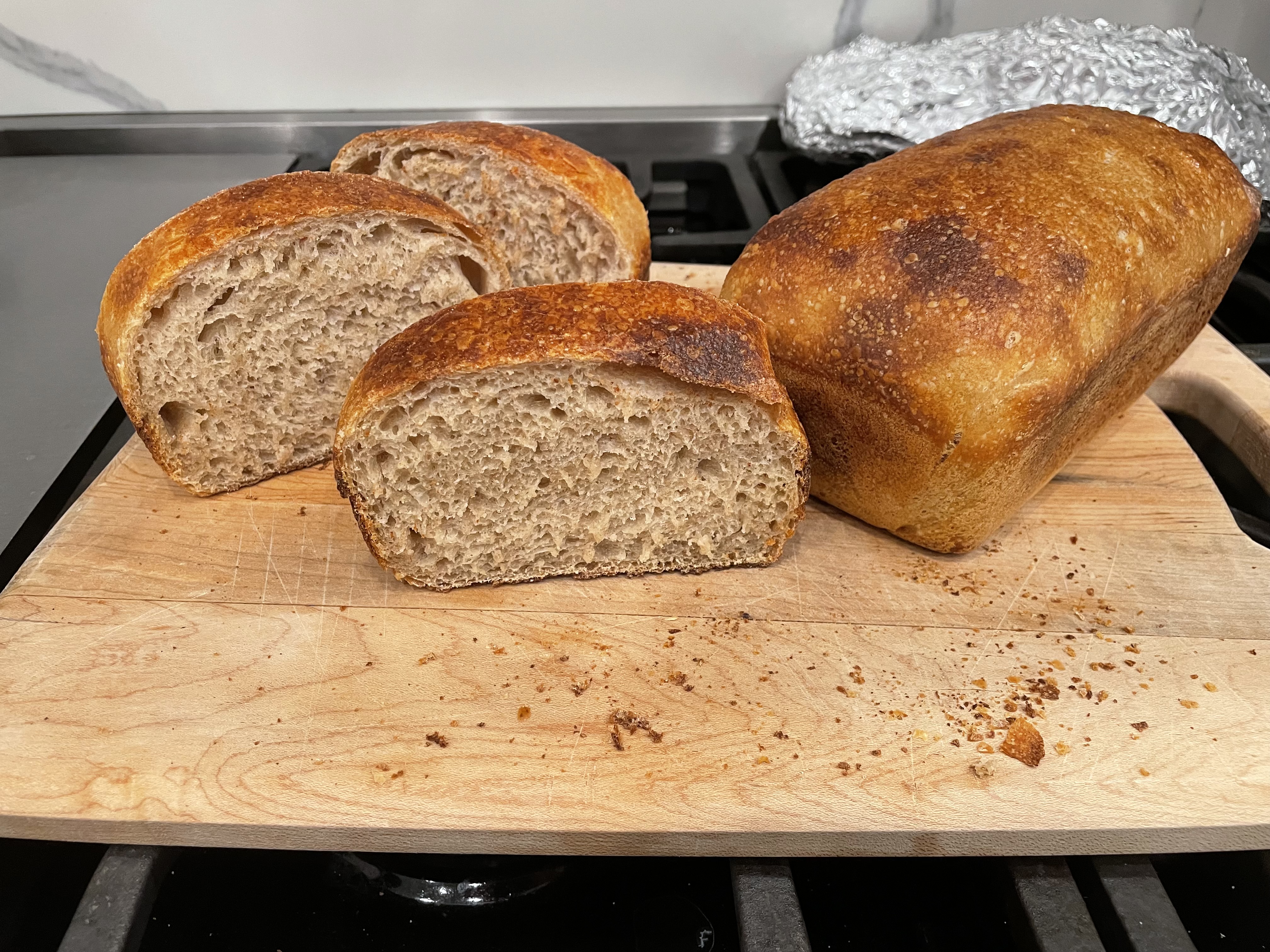My first sourdough loaves
March 24, 2023
It took a few weeks for me to get into what you might call a comfortable sourdough starter-feeding groove. The culture’s come a long way during that time, from soupy inconsistent beginnings to a thriving, doughy mass that I’m now proud to leave on top of my fridge. And, just like my first loaves with store-bought yeast, I was shocked at how simple it was to pull together a tasty bake using this goop of my own creation.
The first attempt
My first two loaves, baked at home over the course of a weekend, didn’t rise nearly as much as I had hoped, which is tough to pin down to a specific cause. From what I’ve read, it could have been that the dough was under-proofed, over-proofed, not kneaded enough, left in the fridge for too long, left out at room temperature for too long after coming out of the fridge, or just all-around not fermented enough.
The process itself for these first two loaves was mostly straightforward: I left the levain overnight, mixed the dough in the morning, kneaded and watched it over the course of the next 6 hours, shaped it into loaves and popped those in the fridge, then baked those the following morning. The recipe I was following (from Josey Baker’s wonderful cookbook) recommended oven times of 20 minutes covered and 20 minutes uncovered, which wasn’t quite enough for these loaves to get properly browned and springy. I think in total I ended up baking them for closer to an hour before I liked what I saw.

Given it was my first ever sourdough, I was extremely happy with the results. Though it wasn’t as impressively tall and bubbly as I might have hoped, it was still full of flavor, chewy, and satisfying. Or, at the very least, it was good enough that I decided to keep my starter alive long enough to bake a few more loaves.
Trying again
A couple weeks later, I gave it another shot. This time, I was determined to make sure the loaves really popped off in the oven, and I’m happy to say there was noticeable improvement. Process-wise, this bake deviated from the first one in a few key ways:
- During the bulk rise, I kneaded the dough much more thoroughly, to try and create more strength and elasticity.
- I cut the bulk rise a little short (just shy of two hours), but left the shaped loaves out at room temperature for nearly 4 hours instead of proofing them in the frige.
The bake itself was fascinatingly more by-the-book than the first one. In a clean 40 minutes, both loaves were nicely browned and much taller than when they started. They were fluffier and lighter in internal texture than their forebears, but didn’t have any huge air pockets that I noticed. The taste was similarly delightful, if a touch less sour than the first one (which I’m guessing is because there was less overall time spent proofing?).

The crust was, interestingly, very thin, which I’m not sure I have a good explanation for (maybe not enough moisture during the first portion of the bake). I’d love to know how to get a classically strong, crunchy crust, but I also wish more people would just admit that a thin crispy crust is more convenient to actually eat.
What’s next?
Who knows! The starter has moved from atop my fridge to inside it, so I don’t need to pay as close attention to that for a while. I might try a few different styles of bread before jumping back to the world of natural leavening. But I don’t want to end the year without baking at least a few classic dutch oven sourdough loaves, so I’m sure I’ll be back with my bacterial friends sooner or later.